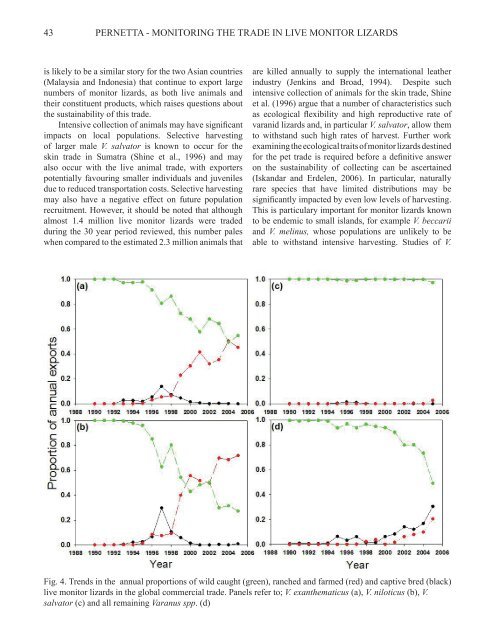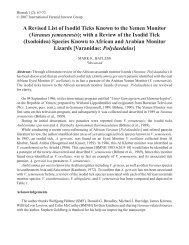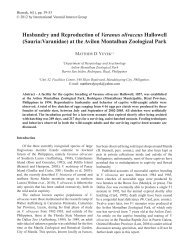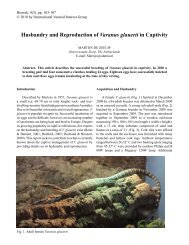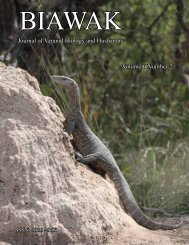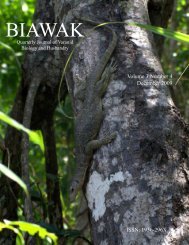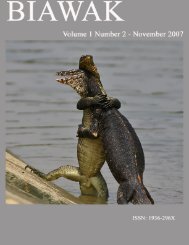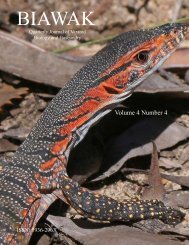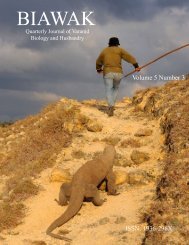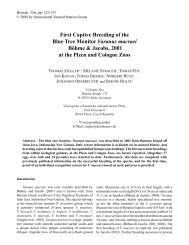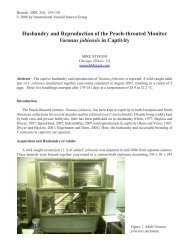(Varanus spp.). - International Varanid Interest Group
(Varanus spp.). - International Varanid Interest Group
(Varanus spp.). - International Varanid Interest Group
You also want an ePaper? Increase the reach of your titles
YUMPU automatically turns print PDFs into web optimized ePapers that Google loves.
43PERNETTA - MONITORING THE TRADE IN LIVE MONITOR LIZARDSis likely to be a similar story for the two Asian countries(Malaysia and Indonesia) that continue to export largenumbers of monitor lizards, as both live animals andtheir constituent products, which raises questions aboutthe sustainability of this trade.Intensive collection of animals may have significantimpacts on local populations. Selective harvestingof larger male V. salvator is known to occur for theskin trade in Sumatra (Shine et al., 1996) and mayalso occur with the live animal trade, with exporterspotentially favouring smaller individuals and juvenilesdue to reduced transportation costs. Selective harvestingmay also have a negative effect on future populationrecruitment. However, it should be noted that althoughalmost 1.4 million live monitor lizards were tradedduring the 30 year period reviewed, this number paleswhen compared to the estimated 2.3 million animals thatare killed annually to supply the international leatherindustry (Jenkins and Broad, 1994). Despite suchintensive collection of animals for the skin trade, Shineet al. (1996) argue that a number of characteristics suchas ecological flexibility and high reproductive rate ofvaranid lizards and, in particular V. salvator, allow themto withstand such high rates of harvest. Further workexamining the ecological traits of monitor lizards destinedfor the pet trade is required before a definitive answeron the sustainability of collecting can be ascertained(Iskandar and Erdelen, 2006). In particular, naturallyrare species that have limited distributions may besignificantly impacted by even low levels of harvesting.This is particulary important for monitor lizards knownto be endemic to small islands, for example V. beccariiand V. melinus, whose populations are unlikely to beable to withstand intensive harvesting. Studies of V.Fig. 4. Trends in the annual proportions of wild caught (green), ranched and farmed (red) and captive bred (black)live monitor lizards in the global commercial trade. Panels refer to; V. exanthematicus (a), V. niloticus (b), V.salvator (c) and all remaining <strong>Varanus</strong> <strong>spp</strong>. (d)


